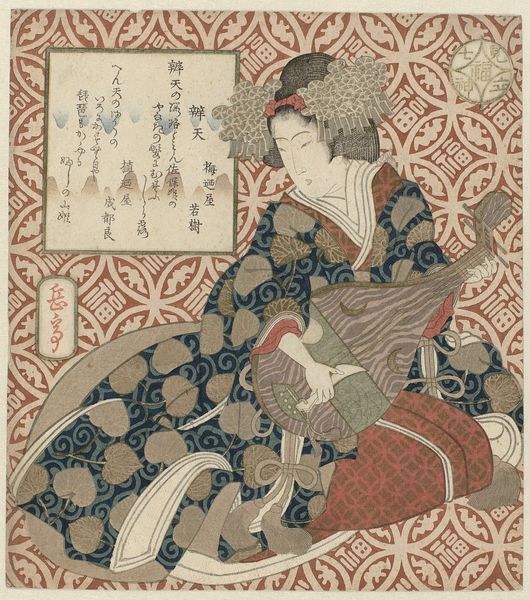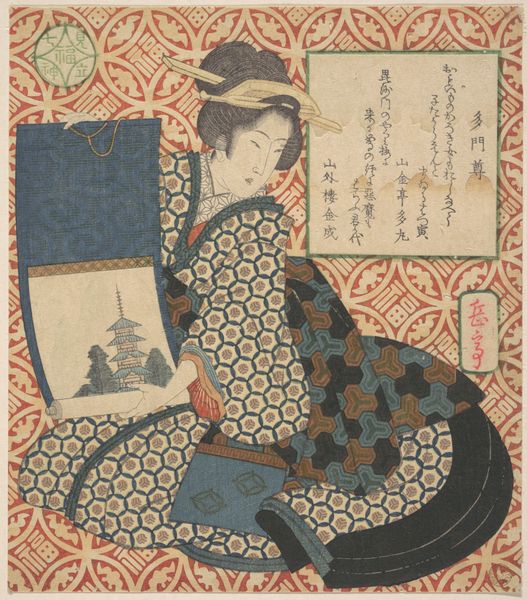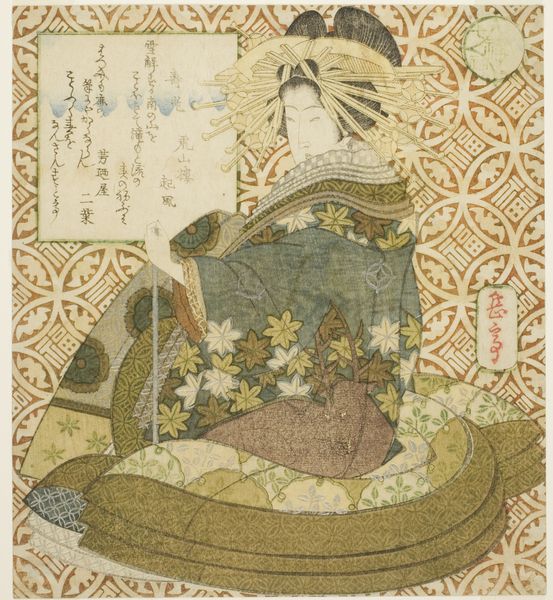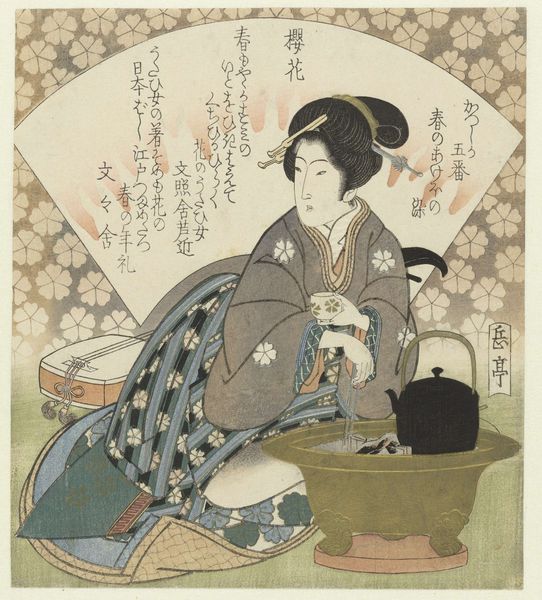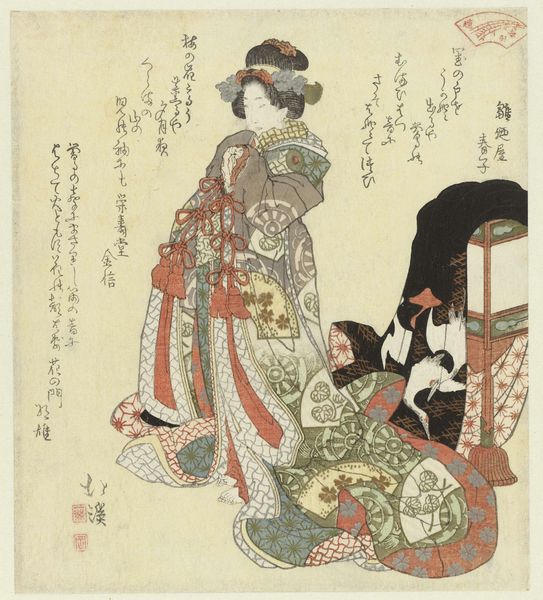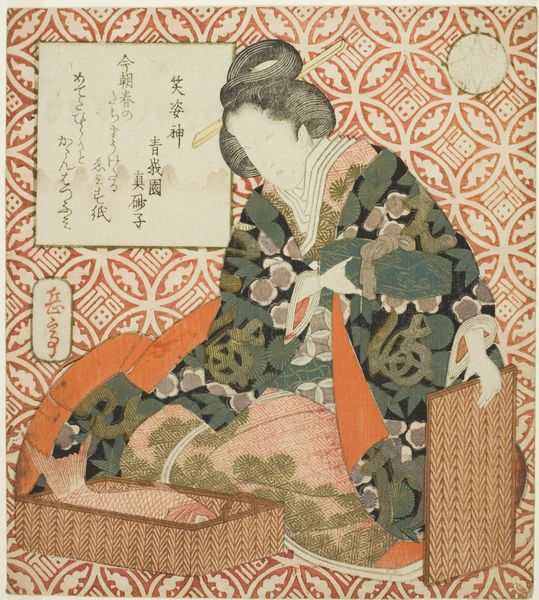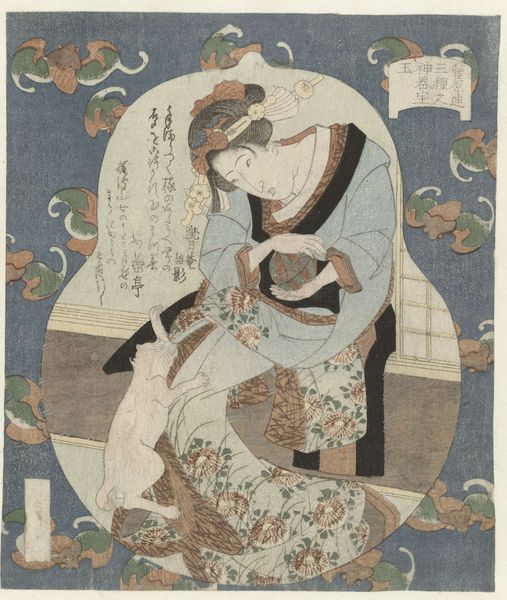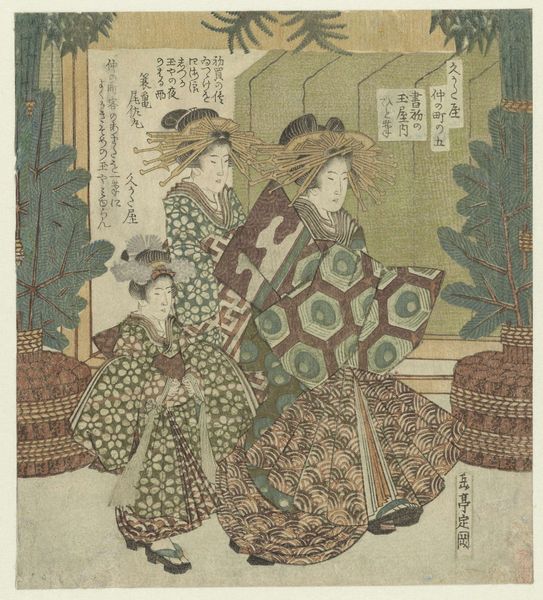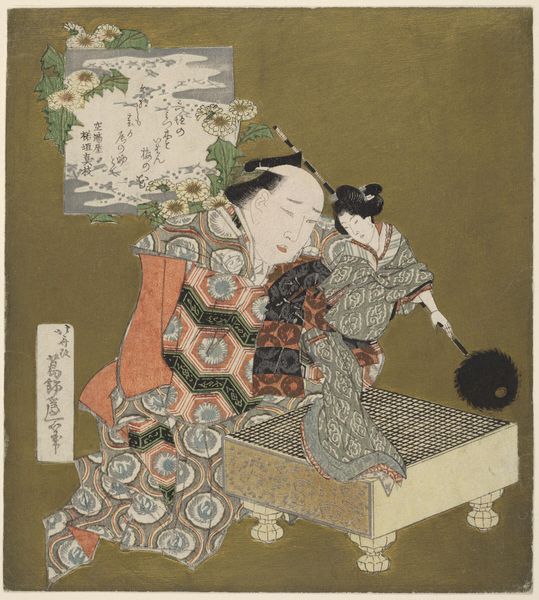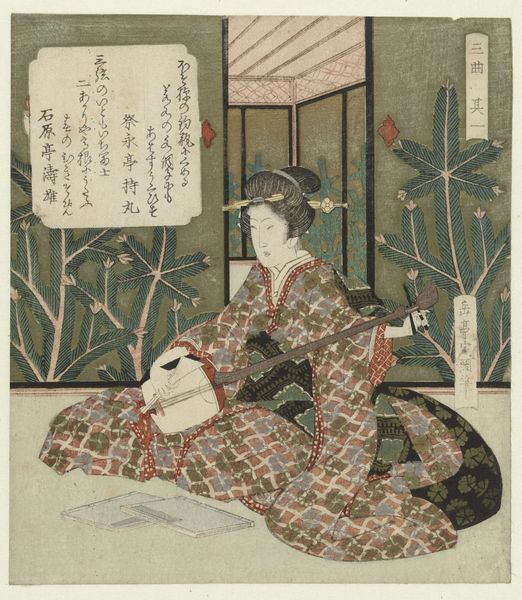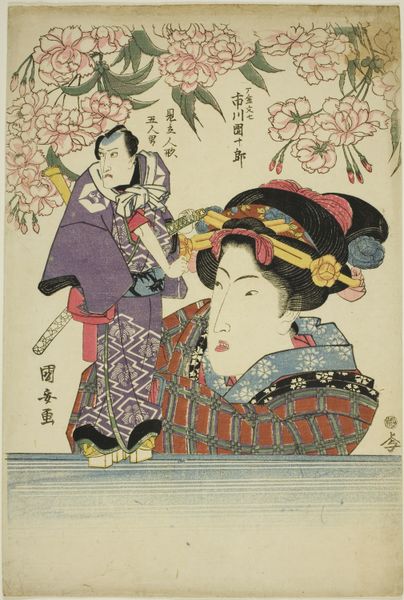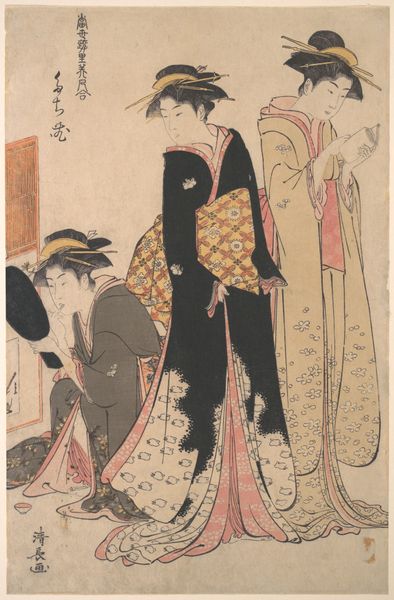
Dimensions: height 216 mm, width 189 mm
Copyright: Rijks Museum: Open Domain
Yashima Gakutei's woodblock print depicts a courtesan seated next to a small figure of Hotei, a god of contentment and abundance. It gives us a glimpse into Japan's Edo period and the floating world of its urban centers. The image creates meaning through a complex interplay of visual codes and cultural references. The courtesan's elaborate hairstyle, makeup, and clothing signal her profession, while the figure of Hotei, typically depicted as a jolly, pot-bellied monk, adds an element of fortune and prosperity. The presence of calligraphy and the use of traditional motifs further root the image in Japanese artistic traditions. This print offers insight into the social hierarchies and artistic conventions of its time. To understand it better, one might look at the history of ukiyo-e prints, the role of courtesans in Japanese society, and the pantheon of gods and spirits that populated popular belief. By examining these historical contexts, we gain a deeper understanding of the image's meaning and its place within the broader cultural landscape.
Comments
No comments
Be the first to comment and join the conversation on the ultimate creative platform.
